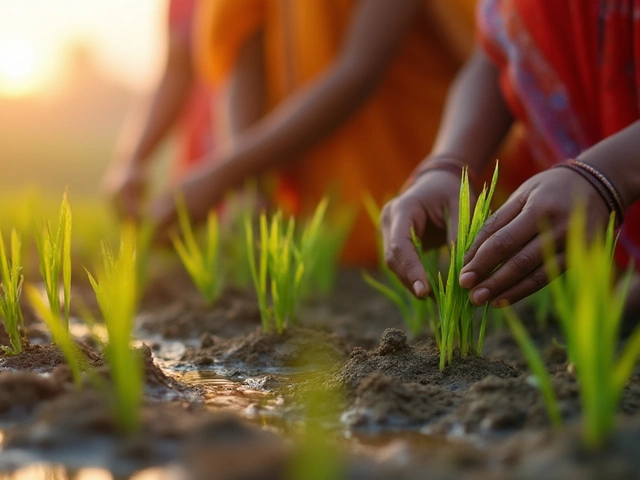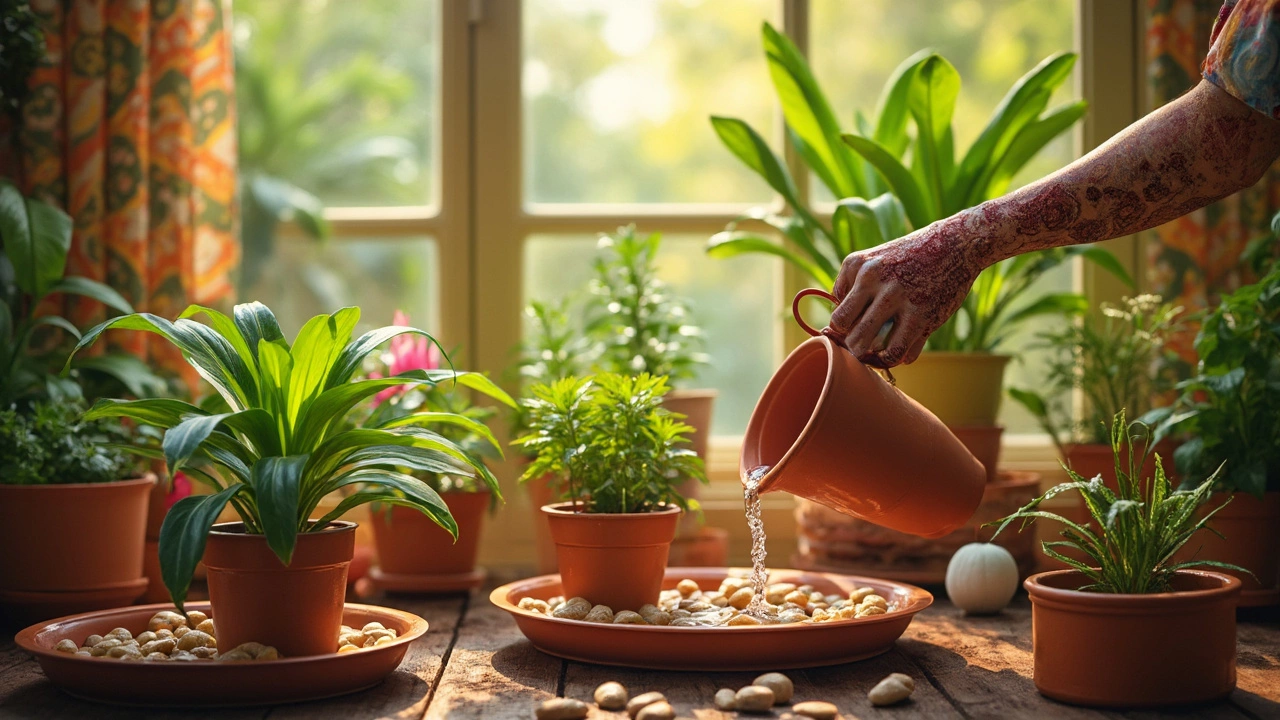Essential Watering Tips for Every Garden in India
Water is the lifeline of any garden, but too much or too little can ruin your hard work. Whether you grow tomatoes in a backyard, herbs on a balcony, or a pothos in your living room, the right watering routine makes all the difference. Below you’ll find straight‑forward advice that works for Indian climates, from the humid coasts to the dry interiors.
Choosing the Right Watering Method
First, ask yourself how often you can water and how much control you need. Traditional hand watering is fine for small beds, but it often wastes water and can cause uneven soaking. Drip irrigation solves both problems by delivering water directly to the root zone. You can lay drip tubes just a few centimeters below the soil surface, set a timer, and let the system run for a few minutes each day. This method cuts water use by up to 50 % and reduces weed growth because the surface stays dry.
If you have a larger plot, consider a sprinkler system with low‑pressure nozzles. Choose a “rain‑type” sprinkler that mimics natural rain; it spreads water gently and avoids runoff on sloped ground. Remember to water early in the morning or late evening to reduce evaporation, especially in the hot summer months.
When you’re on a budget, a simple soaker hose works like a mini‑drip system. Lay the hose around the base of each plant, turn on the tap for a short burst, and let the water seep out slowly. This cheap hack gives you most of the water‑saving benefits without the need for a full‑blown irrigation kit.
Practical Tips for Indoor and Balcony Plants
Indoor plants have different needs. Most houseplants prefer the soil to dry out a bit between waterings. Stick your finger about an inch into the pot—if it feels dry, it’s time to water. Use room‑temperature water; cold tap water can shock the roots. A small saucer under the pot catches excess water, preventing soggy floors.
Many balcony gardeners wonder whether to mist their foliage. Mist only helps if the air is very dry, like in air‑conditioned rooms. In most Indian cities the humidity is already high, so a light mist adds little value. Instead, focus on a consistent watering schedule and use a lightweight potting mix that drains well.
For raised beds or container gardens on balconies, a drip line made of thin tubing works wonders. You can attach a simple timer, set it to run for a few minutes after sunset, and let gravity do the rest. This keeps the soil moist without drowning delicate herbs like coriander or mint.
Regardless of where you grow, keep an eye on the signs of over‑ or under‑watering. Wilting leaves that feel soft and limp usually mean the plant is thirsty, while crisp, brown leaf edges hint at too much water. Adjust the frequency and volume until the plants look perky.
Saving water isn’t just about the method; it’s also about timing. Letting rainwater collect in a bucket and using it for your garden reduces your water bill and gives plants a gentle, mineral‑rich supply. If you use tap water, let it sit for a few hours to let chlorine evaporate, especially for sensitive indoor plants.
These simple steps—choosing the right system, watering at the right time, and watching plant cues—can turn a thirsty garden into a thriving oasis without wasting a drop.
Pebble Tray Care: How Often Do You Need to Fill It?
Pebble trays are a low-effort hack to boost humidity for your indoor plants, but figuring out how often to refill them can be confusing. This article dives straight into when and why you should top off your tray, practical signs to look for, and handy tips to get the most out of this trick. Find out how to prevent mold, over-watering, and common mistakes. Get smarter about keeping your houseplants happy and hydrated, without turning your window ledge into a swamp.
About
Indoor Plant Care
Latest Posts


How Much Rice Does 2 Cups Uncooked Make: A Deep Dive into Rice Cultivation
By Alden Thorne Mar 17, 2025

How Deep to Plant Rice: Best Depths, Mistakes, and Expert Tips
By Alden Thorne Jul 11, 2025

Most Sustainable Plant in the World: A Real Game-Changer for Your Garden
By Alden Thorne Apr 23, 2025

